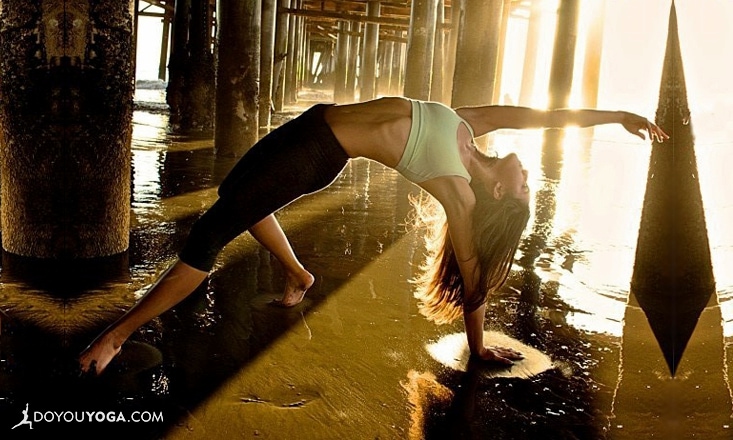Yoga is a metaphor for life. The work we put into our yoga practice while on the mat translates to our interactions with others in the real world.
This parallelism can be applied to physical, mental, and emotional aspects of our asana practice. Take the following yoga principles to mind the next time you find yourself on your mat.
1. It begins with the breath.
Yogis measure one’s life on earth not in years, but in the number of breaths. The number and quality of the breath enhances our ability to be present, live fully in each moment, and practice mindfulness. Yogic breathing, also called pranayama, calms the central nervous system, bringing us into the here and now, and therefore calming and relaxing the body.
You have experienced this in asana class; when taking the body into Ardha Chandrasana, for example, the pose is achieved much more easily if the breath is full and steady—allowing for improved balance and extension of the limbs.
Your teacher might say, “breathe into the posture for balance.” This cue is helpful in yoga class to help the student find center and focus.
When we come back to the breath, whether in a challenging balancing pose or a difficult situation in the workplace, the calmness of mind achieved by practicing pranayama translates to physical relaxation and a stronger ability to be mindful and meaningful in our thoughts and actions.
2. The Power of Positive Thinking
One of my favorite things about yoga class is the adrenaline rush and “happy hormones” that flood my system. I am one of those fitness junkies who get an emotional high by getting my heart rate up.
This surge of Dopamine and Norepinephrine are the power proteins behind positive thinking, allowing the athlete to achieve euphoria and push themselves further. In yoga class, this adrenaline rush can produce positive thoughts, allowing the practitioner to experience creativity, kindness, and feelings of joy.
Pass it on! Send a smile or hug to a fellow student to share the happiness with others.
3. Free Yourself from Judgement
The yoga studio is a safe place, free from judgments about yourself or others. Learning to cultivate an attitude that isn’t constantly thinking about how you are doing, what you look like, or what the person next to you is doing can be a challenge if you are used to always attaching criticism to your actions and emotions.
Let it go! Freeing yourself of judgement will bring you stronger and more meaningful relationships. One way to do this is to go back to #1: focus on the breath.
By bringing your awareness back to your inhale and exhale, you forget about the nagging thought that is forcing you out of your zen moment. Asana practice is not the time to be thinking about the future or worrying about the past. Enjoy the beautiful moment for what it is by being fully present.
4. Practice Modifications That Work For Your Body
What is that one thing that you coulda, shoulda, woulda, but held back because of x, y, z. Identify your variables for stunted growth. Is it fear? Shame? Guilt? A lack of confidence?
Let’s take this simple concept to yoga class. Fill in the blank: “I can’t do _____ pose in yoga class.” Now ask yourself “why?” Is it because the pose is too hard? Because your body "doesn’t bend that way"? Because you aren’t strong/flexible/lanky enough?
For me, it’s Lotus pose. I CAN’T do Lotus pose because I can’t get my feet high enough in the hip space and it hurts my knees. My body is not made that way. This seems pretty straightforward.
Now, let’s change the can’t to a can. I CAN do a modified Lotus. Supported Sukhasana (seated cross-legged pose) with both ankles crossed works for me. If I place a support under my seat, the hips open easier so the pose is steady and comfortable.
Make a modification so that the pose works for your body, turning the I can’t into I can. Forcing yourself into Lotus pose is not benefiting your body if it causes discomfort or strain. This physical discomfort is translated into mental discomfort, which is ultimately harmful on so many levels.
Make a modification so that the pose works for your body, turning the "I can’t" into "I can."
This is the beauty of yoga—it can always be modified or transformed for your body type, physical limitations, or injury. Once mastered, the simple yet powerful modifications on the mat make it much easier to adapt to adverse conditions off the mat.
This is what yoga is all about anyway—the ability to take these amazing yoga concepts and apply them to real life in order to make the world around you a better, more peaceful, and loving place.
So what is it about your life that you would like to see change? Can you make a modification to create a more beautiful space for yourself?
As with all change, take the modification over time. Take a moment to become accustomed to the idea and then try it out. Sometimes holding on requires more strength than letting go.
Image credit: Mandy Martini


